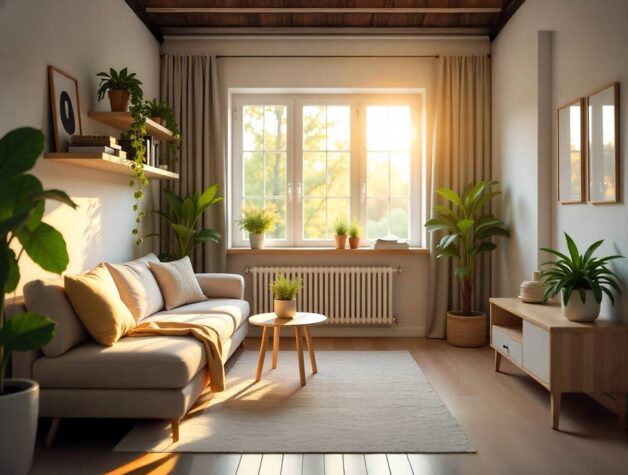 Studies show a link between the quality of the air inside a home and the health of the people who live there. For example, according to the American Lung Association, poor indoor air increases the likelihood that someone exposed to that air will eventually develop respiratory infections. The risks are even greater for children and seniors.
Studies show a link between the quality of the air inside a home and the health of the people who live there. For example, according to the American Lung Association, poor indoor air increases the likelihood that someone exposed to that air will eventually develop respiratory infections. The risks are even greater for children and seniors.
Without pure air, you may also be increasing your family’s chance of exhibiting symptoms of allergies, asthma, cardiovascular deterioration, organ damage and cancer.
Maintaining clean indoor air is important to your quality of life. A few simple adjustments within the reach of most homeowners can severely reduce the health threats posed by indoor pollution.
Ways You Can Make Sure Your Household Air is Pure
One of the easiest ways to combat poor indoor air is by opening windows. If opening windows for a while each day is not practical, a ventilation system can also introduce fresh outdoor air into the home.
Exhaust Fans
Exhaust fans can improve air quality by removing pollutants quickly before they can circulate through the home. Most modern homes have exhaust fans in both the kitchen and bathrooms to battle cooking odors and humidity. A kitchen exhaust fan is especially vital if the stove uses natural gas.
HVAC Maintenance
HVAC systems are a superb tool for helping indoor air to remain clean, but they require regular checkups to ensure they’re working efficiently. Simple maintenance includes replacing ordinary filters with high-grade ones capable of capturing smaller airborne particles. Professional maintenance includes sanitizing the ductwork to eliminate mold and mildew.
Air Purifiers and Dehumidifiers
Portable air purifiers can provide an additional level of protection. They’re light enough to transport to the areas where they’re most needed, such as the bedroom and kitchen.
Another helpful device is a dehumidifier. Lowering the humidity level in a room can reduce the likelihood of developing a mold and mildew problem. They’re useful throughout the home, but are likely to have the most dramatic effect in humidity-prone areas, like a basement.
Things That Can Hurt the Air in Your Home
When people think of indoor pollution, they usually think of smoking or using dangerous chemicals during a home improvement project. Yes, those activities pose a threat, but often, it’s the more ordinary activities and items of daily life that are to blame for ruining air quality.
Gas Appliances
A good example of a typical household item that lowers indoor air quality is a natural gas appliance. A byproduct of burning the gas is carbon monoxide.
It’s generally known that carbon monoxide in high concentrations can be damaging, even deadly. However, fewer people realize their gas appliances also create air pollution under normal usage conditions.
In its natural state, natural gas is odorless, so manufacturers add a sulfuric-type smell that’s objectionable enough to get your attention if the appliance is leaking. But the danger exists even without a leak. Regular use of a gas stove or heater that’s in perfect working condition still releases carbon monoxide into your home.
VOCs
Some items, such as paints, varnishes and cleaning supplies, release volatile organic compounds (VOCs), which are known to be a respiratory health hazard. They’re also found in clothes you’ve had dry cleaned and in upholstered furniture.
In small doses, VOCs can trigger eye, nose and throat issues. In cases of prolonged exposure, they can increase the risk of liver and kidney damage.
Ordinary house dust plays an overlooked role in polluting indoor air. It’s often mixed with pollen and animal dander, known allergens that can aggravate sinus conditions and asthma.
Mold and Mildew
Once mold and mildew gain a foothold in a humid area of your house, they can be difficult to eradicate. Meanwhile, they lower your air quality and possibly contribute to allergy-like symptoms in your family.
Quality Indoor Air is Achievable
Indoor air quality diminishes naturally due to normal daily activities. However, regular ventilation and a properly functioning HVAC system can go a long way toward keeping indoor air breathable. Removing mold and mildew and combating them with air purifiers and dehumidifiers is also helpful.
There isn’t one sole technique for protecting your household air. However, using an assortment of methods in combination can help purify the air of pollutants, making your home enjoyable and healthy.




























